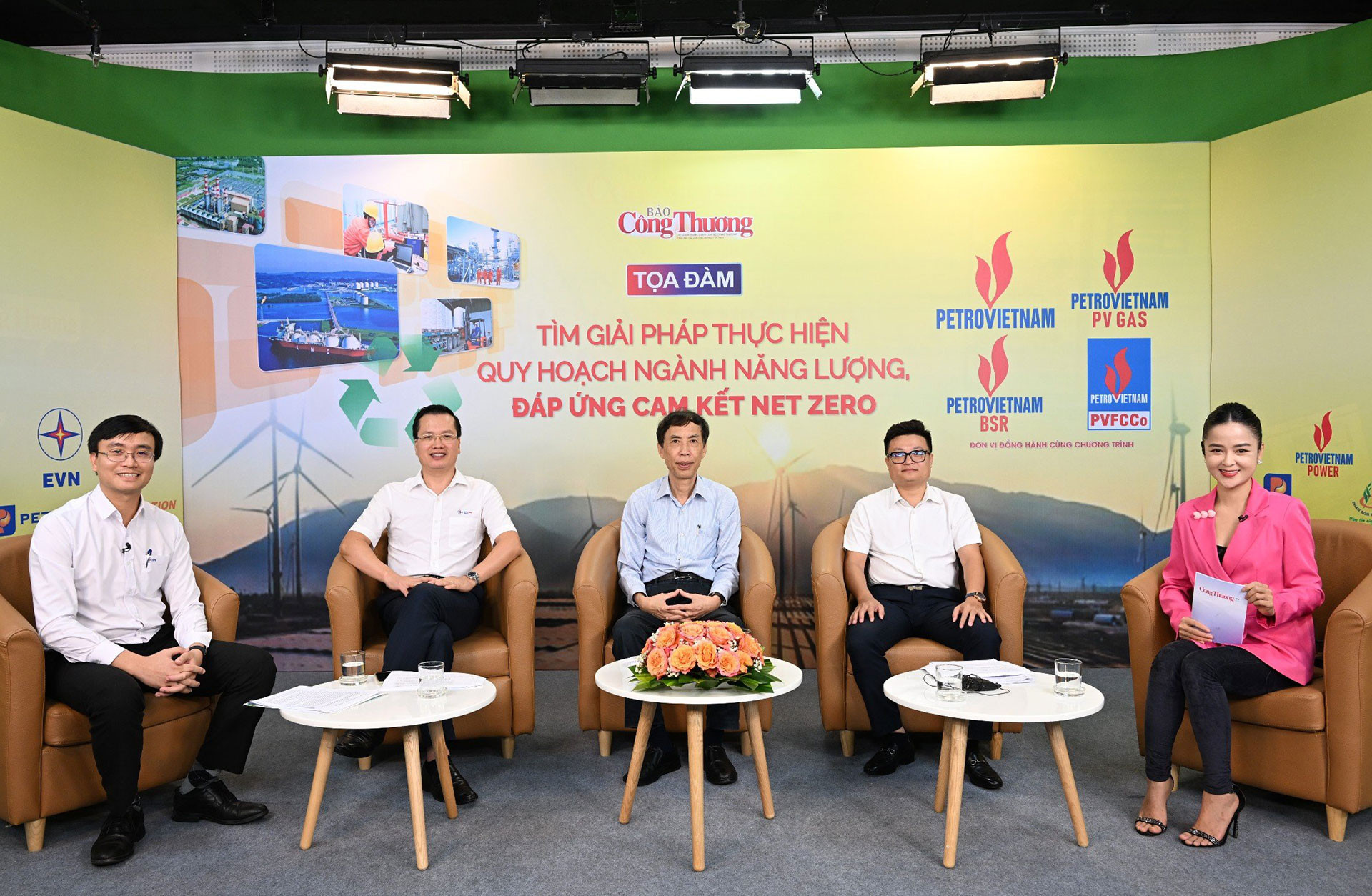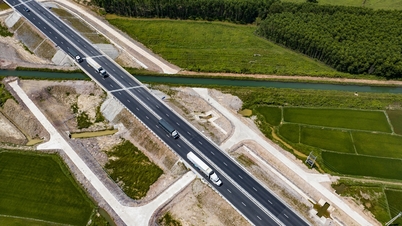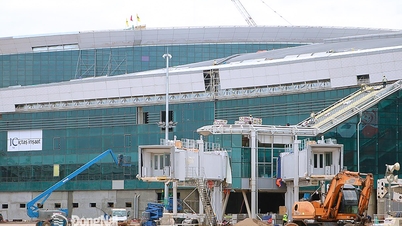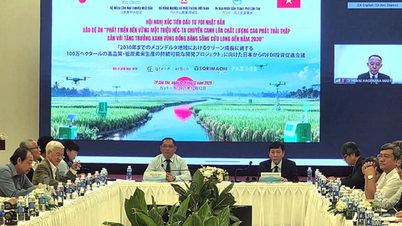Challenges and bottlenecks
This is an issue discussed by experts when considering the issuance of energy and mineral resource plans to encourage businesses of all economic sectors to invest in the green economy and circular economy.
Speaking at the seminar "Finding solutions to implement energy sector planning and meet Net Zero commitments" on September 20th, organized by the Industry and Trade Newspaper, economist Dr. Vo Tri Thanh stated that energy is facing several uncertainties such as technology, climate change, and capital sources. These demands require significant institutional changes, but with sufficient flexibility to adapt to unpredictable fluctuations.
According to a representative from the Department of Oil, Gas and Coal ( Ministry of Industry and Trade ), the national plan for petroleum and natural gas storage and supply infrastructure mainly provides guidance on the location and scale of storage facilities and pipelines nationwide. This allows businesses to invest effectively in construction, serving their production and business activities, and contributing to ensuring storage infrastructure and energy security.
In addition, there are difficulties regarding the supply of coal for electricity production in the coming period. Notably, the significant increase in domestic coal production is limited due to increasingly challenging production conditions.
Domestic coal demand currently exceeds domestic production capacity. In the future, Vietnam will have to continue importing large quantities of coal, up to tens of millions of tons, to supply the domestic market. This demonstrates the increasing dependence of the economy on imported coal.
According to Vietnam Electricity Group (EVN), in the Power Development Plan VIII, EVN continues to be assigned the main role in ensuring a stable and safe electricity supply for socio-economic development and in investing in power generation and transmission grid projects as assigned.
However, the proportion of power sources owned by EVN and its subsidiaries (including GENCO 2 and 3) accounts for only about 38%, of which EVN directly manages only about 15%, and this proportion will continue to decrease rapidly as the share of renewable energy increases in the future.
"Therefore, the biggest challenge is ensuring a balance between electricity supply and demand, which is not only the responsibility of EVN but also depends heavily on other state-owned and private enterprises outside of EVN," an EVN representative stated.

Elaborating on the challenges, economist Dr. Vo Tri Thanh stated: “Therefore, the energy sector plays a decisive role in fulfilling the green mission and green aspirations. However, for a country with limited resources and capital like ours, implementing the ‘greening’ of the energy sector still faces many challenges.”
The challenge here is how to ensure energy security, economic development, and a greater prevalence of "green" elements in the process of "breaking away from the old and building a new" economy.
Dr. Vo Tri Thanh pointed out that, firstly, the question is whether the business environment is attractive enough for investors. According to World Bank calculations, Vietnam needs $368 billion to green its economy by 2040. Secondly, there is the issue of institutional implementation. Thirdly, there is the issue of technology selection. This is a matter that remains highly debated.
Towards fulfilling the Net Zero commitment
At the seminar, experts, managers, and businesses all shared the view that, in order to effectively implement planning, first and foremost, with regard to energy development planning, in the long term, it is necessary to ensure that energy development is greener, cleaner, and meets the requirements for supplying clean raw materials for development.
However, it is also necessary to consider the environmental protection aspects of the process, as well as its suitability to the specific conditions and circumstances of Vietnam's level of scientific and technological development and the natural conditions we currently possess. Only then will energy planning be effective, practical, and sustainable in the long term. If we do not make every effort, other sectors will also be significantly affected by the electricity sector.
For Vietnam to achieve its sustainable development goals, the energy sector is one of the key sectors. In reality, the green growth strategy requires many areas such as green consumption, green production, etc., and demands the involvement of the entire political system. In particular, investment in energy, linked to the concept of "green," is crucial. This aspect is more market-oriented and competitive.
Ensuring consistency and interconnectedness between planning schemes is a crucial issue. Currently, we are implementing planning with broad objectives, not limited to individual localities or sectors. If we do not ensure consistency and interconnectedness between these plans, then the plans will become "dead plans."
Accordingly, planning must be consistent with the national master plan, following the same direction. Therefore, some sectors may develop a little slower but are more efficient. However, some sectors must develop faster to create breakthroughs, contributing to the development of other sectors and localities.
The Department of Oil, Gas and Coal proposed solutions, including organizing the selection of investors for energy projects and allocating land for the development of energy facilities in accordance with the law, prioritizing the allocation of land for energy projects according to the plan; and taking the lead in closely coordinating with investors to carry out land clearance, compensation, relocation, and resettlement for energy projects in accordance with regulations.
Hanh Nguyen
Source



















































































































Comment (0)